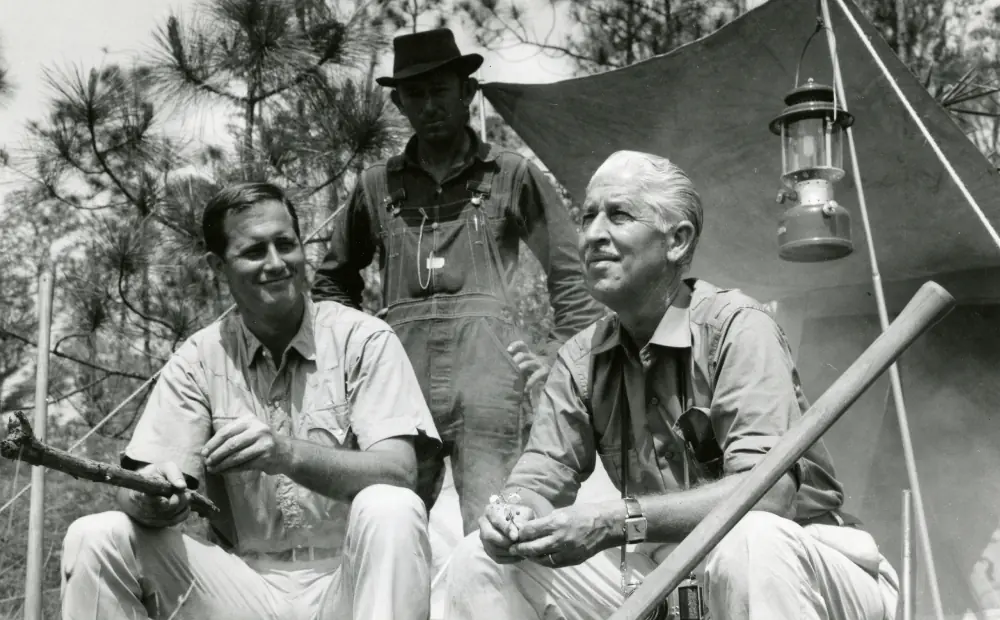0:00
Red wolves once roamed freely from Texas to New York, but their numbers have dwindled to just a few dozen in the wild.
0:07
Recently, I had the opportunity to care for a new litter of red wolf pups that were bred in captivity.
0:14
Now I'm in North Carolina, the only place in America where red wolves can be released back into the wild.
0:21
We're on Alligator River National Wildlife Refuge right now.
0:24
There's been a consistent presence of red wolf ever since reintroduction 1987.
0:31
The Red Wolf Recovery Program has successfully reintroduced over 120 adults and 34 pups to their natural habitat.
0:42
So this is the combo VHFG PS: collar.
0:45
And it lets us track them from the ground or from the air at any point time we're out there, you know, pound the ground for him.
0:51
This is some good cover here in this tall grass.
0:53
It is.
0:54
And you can be really close with that without even seeing them.
0:58
I'm hoping we get lucky and spot one of these incredibly rare creatures.
1:04
Joe picks up signals of a young female in the area that recently produced her first litter.
1:10
And we might get a glimpse over if she moves around soon.
1:13
We are on her trail.
1:15
There's a little bit, just a tiny bit of movement.
1:17
Take take a look right over there about 11:00.
1:21
It's the new Mama, and she appears to be hunting for food.
1:25
Yeah, that definitely looks like her.
1:26
You can see the little bit of the orange, the collar.
1:31
Terrific.
1:31
I never thought I'd get to see one of these in the flesh.
1:37
The, you know, her body language and the, the way she's moving to me makes it look like she's hunting for small mammals, even field mice or something like that.
1:45
Just the precise movements just kind of has her ears back and her head kind of down.
1:50
In 1980, the red wolf was officially declared extinct in the wild, so this animal is living proof that Wildlife Conservation can succeed.
2:02
What an inspiration and spark of hope for the future of wolves in North America.
2:09
The wild bred wolves in North Carolina are among the very last of their kind, and without this protected land they wouldn't be here at all.
2:19
Across the country in Texas, some of the last remaining coastal Prairie on Earth is another vitally important habitat that's federally protected.
2:28
Prairie is one of the most overlooked habitats to a lot of people may just see flat open space, but it's so much more than what you see.
2:36
It holds all sorts of wildlife, a million at waters.
2:45
Prairie chickens once roamed these prairies, but with human expansion over the 20th century, their numbers dwindled toward extinction.
2:53
As the habitat declined, so did the Prairie chicken population.
2:57
They are currently below 200 in the wild.
3:01
Thanks to weather events like Hurricane Harvey, they were reduced to as low as 12 individuals in the wild.
3:07
These ground dwelling birds may be rare, but they're well known for their colorful behavior.
3:14
In the springtime, the males will go out onto the Prairie and they'll do what we call booming.
3:23
It's their mating dance.
3:25
They puff up their feathers a little bit and they blow up these bright orange air sacks on their neck and they stomp their feet really fast and they let out this sound.
3:41
It's honestly indescribable, the feeling that you get hearing such a strong sound come out of a little bird.
3:47
You hear like this eerie across the Bray before you even see the birds, the dance, It just makes me laugh every time I look at it.
3:57
Just makes you kind of want to shake with it a little bit.
4:01
They might even fight each other.
4:04
They get pretty territorial during that time of year, and it's all for the sake of getting a mate.
4:12
The Atwater Prairie Chicken National Wildlife Refuge in Texas was created in 1972 and offers the last remaining hope for this incredibly rare but important bird.
4:24
A healthy Prairie habitat means you're going to have more Prairie chickens.
4:28
It's an indicator species is what we call it.
4:31
If we're managing the habitat specifically for this Prairie chicken, we're meeting the needs of all the other wildlife indirectly.












